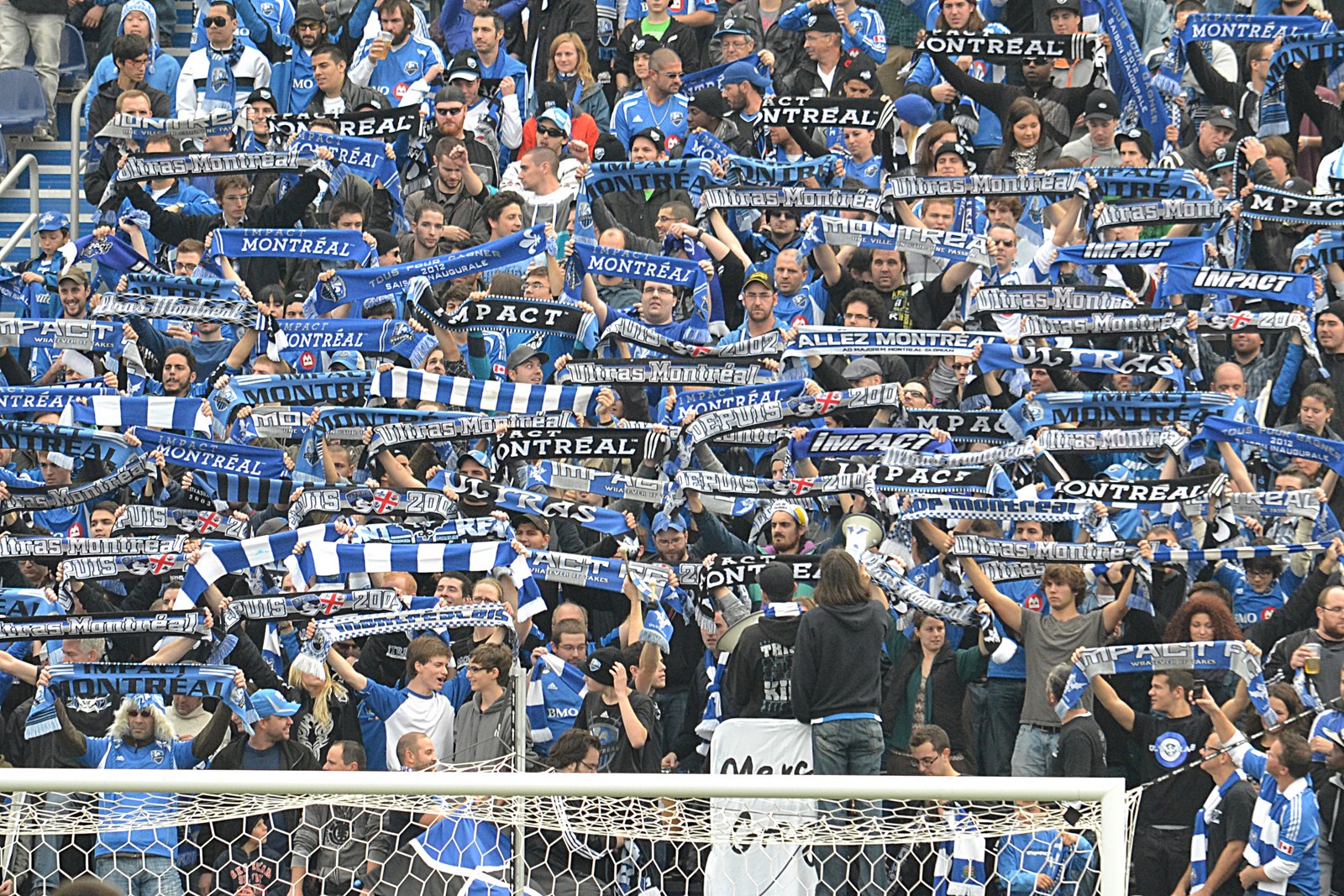Fashion trends at Concordia haven’t been particularly hard to track these past few years. Most students will have noticed the steady increase of Canada Goose jackets, rubber boots by Hunter and black leggings (or tights, or jeggings, or yoga pants—the terminology can be difficult to master). But the more observant among us may have also picked up on the proliferation of another accessory: the blue and white Montreal Impact scarf.
Unlike the jeggings, though, the scarf is about passion, not fashion.
“I wear them to school all the time,” said Psychology major Yann Bonato De Angelis, a faithful supporter of the club. “Game day or not, it’s how I roll.”
The Impact colours have gained prominence on campus since the team’s entry into Major League Soccer in 2012 and their four straight wins to start the 2013 season has led to a visible uptick in popularity. Many of the Impact faithful, though, were on board long before the bandwagon came to town.
“I have been an Impact fan since the day they started in ’93,” said De Angelis. “However, I have been a loyal supporter for five years now and have gone on several trips to watch the team outside of Montreal.”
Like De Angelis, recent graduate in History Sebastian Hertner owns many Impact scarves, and wears them daily. Asked why he supports the club, Hertner’s reply was succinct: “Love your city—support your club.”
These aren’t fair-weather fans, folks. And although the blue and white may not have entirely supplanted the bleu, blanc et rouge as the colours of choice on campus, those who do wear the gear wear it proudly.
At the root of the passion, De Angelis explained, is “the Ultras mentality,” which means “being a supporter, rather than just an ordinary fan.”
The “Ultras” mentality of which he speaks refers to the philosophy of the club’s largest supporter group, the Ultras Montréal (UM02). To the Ultras, being a supporter is about more than just watching the games. It’s about standing and chanting for the 90 minutes that the team is on the pitch. It’s about travelling for hours by bus to make yourself heard in hostile road stadiums. It’s about supporting the team through good times and bad—to suffer and to celebrate with the club and, above all else, to be “always faithful.”
So, back to those little blue and white scarves that have been popping up around campus. Well, they have nothing to do with fashion, to be sure, and they are most certainly not a passing trend. They are the symbol of a group of fans who wear their hearts on their sleeves—and their colours around their necks.
And they’ll still be wearing them next year, long after those boots by Hunter have found their way to the back of the closet, alongside that pair of Uggs from 2009.
